MIT Music Major Research Capstone: The Evolution of Piano Experimentation
Throughout fall 2019, I investigated the intersection of music and mechanical engineering, which culminated in a musicology paper and talk. I examined books on the history of piano design and manufacturing, piano technician handbooks, and scientific papers on mechanical studies of the piano. I also interviewed piano technicians/tuners from MIT and faculty from North Bennett Street School, a renowned trade school in Boston. "Piano experimentation" is essentially treating the piano as a mechanical system and approaching it from an experimental lens.
Abstract: For over two centuries since its invention in the early 1700s, the piano’s design had been continuously evolving in comparison to the design of most other instruments due to its complex mechanisms involving the hammer-key action, strings, soundboard and iron frame. Due to business and monetary pressures and demands of pianists, piano makers constantly experimented with parameters of the piano’s design to attempt to achieve a better instrument with optimal tone and quality of sound. For example, Johann Stein experimented and modified Schröter’s design of piano action and invented keys with more elastic touch and soulful tone and Siegfried Hansing conducted experiments to construct an improved soundboard strengthened by bars. Such experimentation was often motivated by the prospect of invention and judged by qualitative evidence such as tone quality and sound length. In the past century, as piano design changes waned and the need for piano maintenance increased due to widespread ownership of the instruments, the prominence of piano technicians and rebuilders as experimenters rose. Several piano handbooks from the 1900s describe experimental processes completed by technicians, such as regulating average key height, rebuilding piano action, and changing the touch weight of keys through measurement of each individual key. These processes became relatively uniform in practice, emphasizing precision rather than uniqueness. In contrast, scientific papers from the past decade detail experimental setups used to describe technical physics aspects of piano mechanisms, such as the measurement of hammer acceleration and soundboard properties, presenting results with numerical quantities and complex, abstract equations in a passive, observational manner. Ultimately, this work will first examine historical details of experimentation of pianos, then analyze and compare piano handbooks and scientific papers, and finally question the relevance of current experimental methods using personal accounts of piano builders in the Boston area. The work aims to compare the motivations and outcomes of experimentation on pianos, showing a shift from qualitative to quantitative results and a more passive outlook on experimentation today as it has less impact on piano design.
Composition
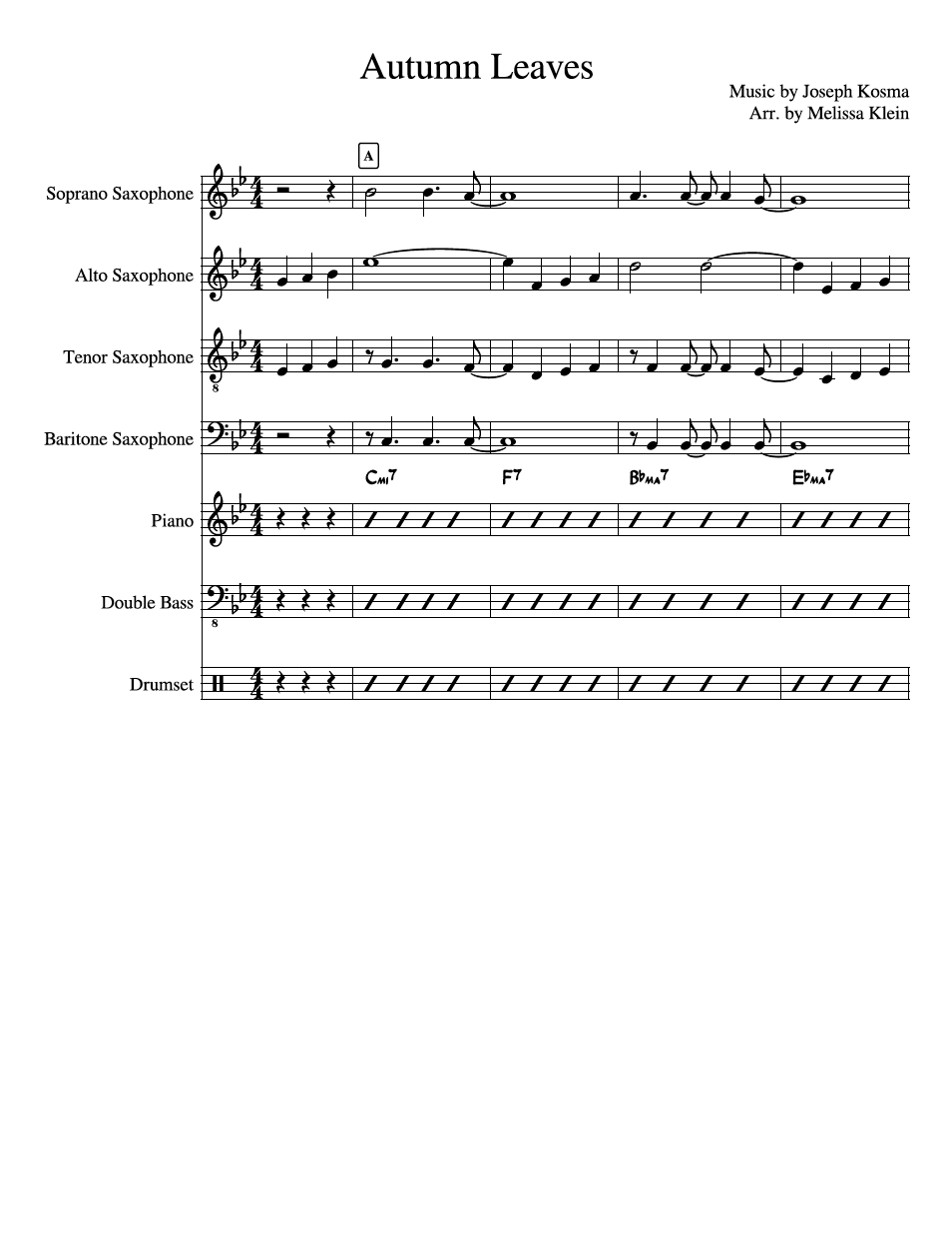
Jazz arrangement
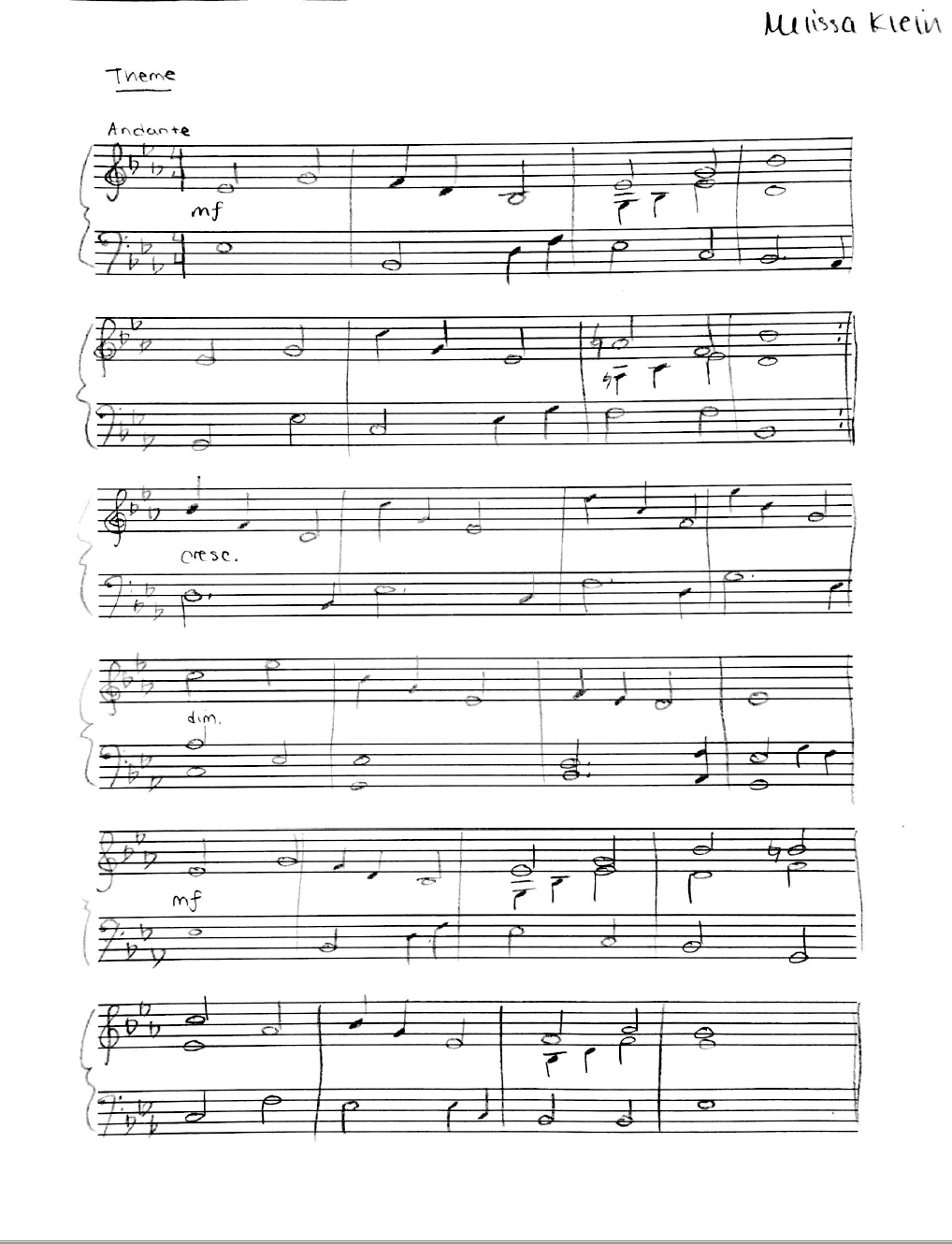
Theme & Variations
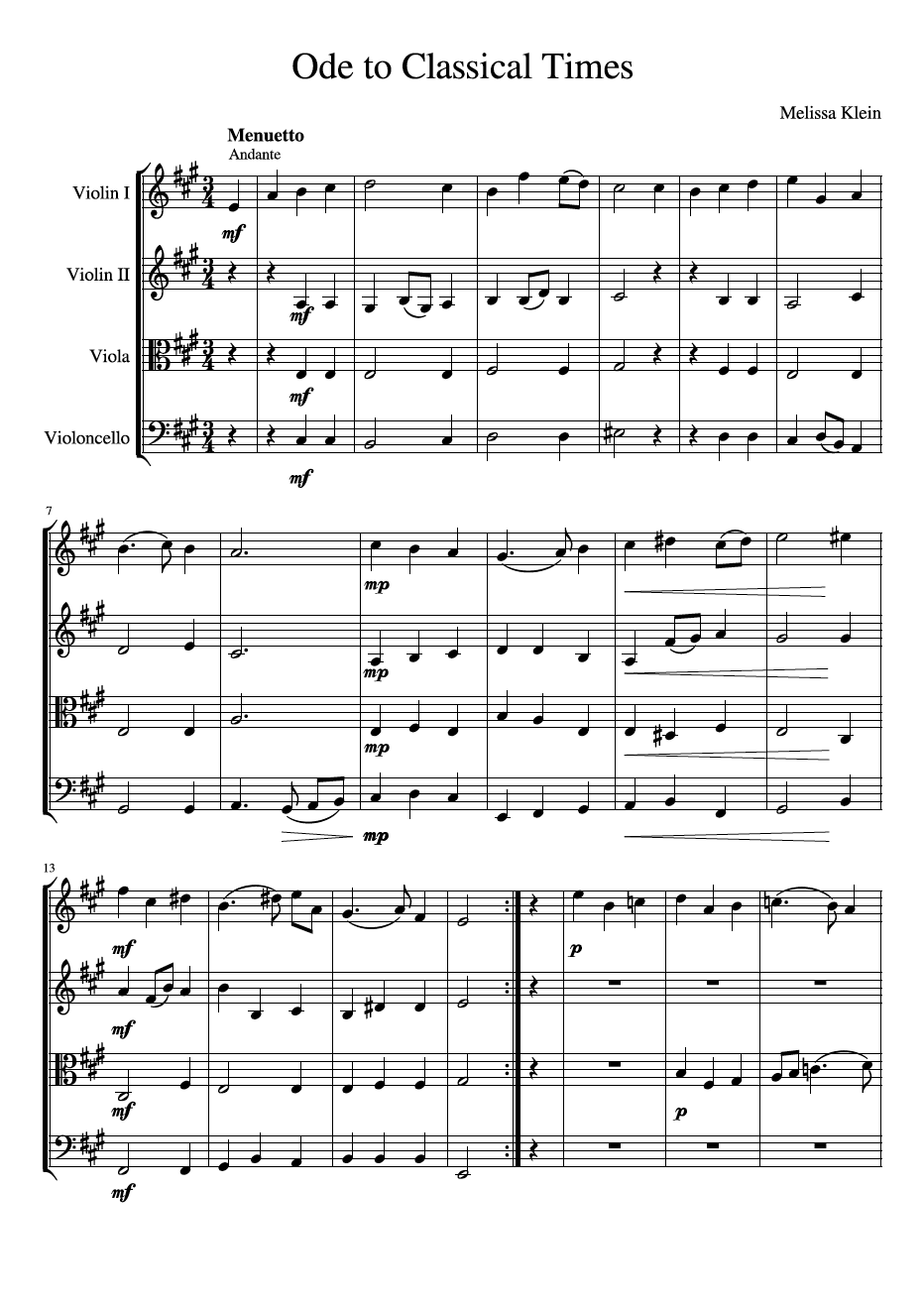
String quartet
Performance
In 2018, I had a 50-minute solo piano recital as an MIT Emerson Scholar. My program notes are below:
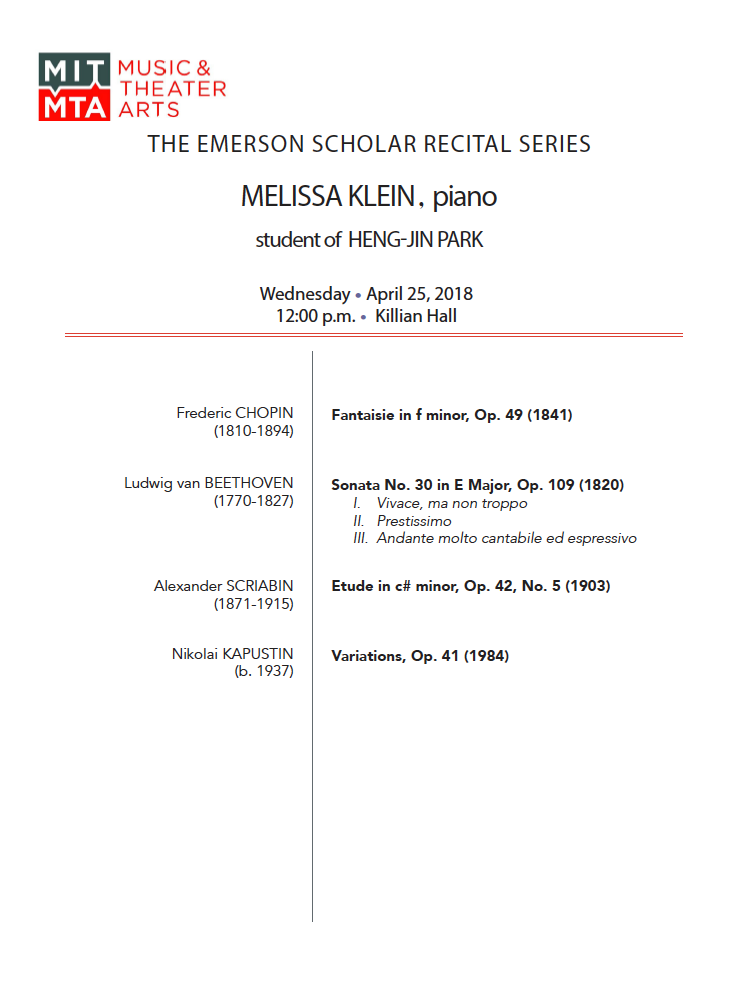
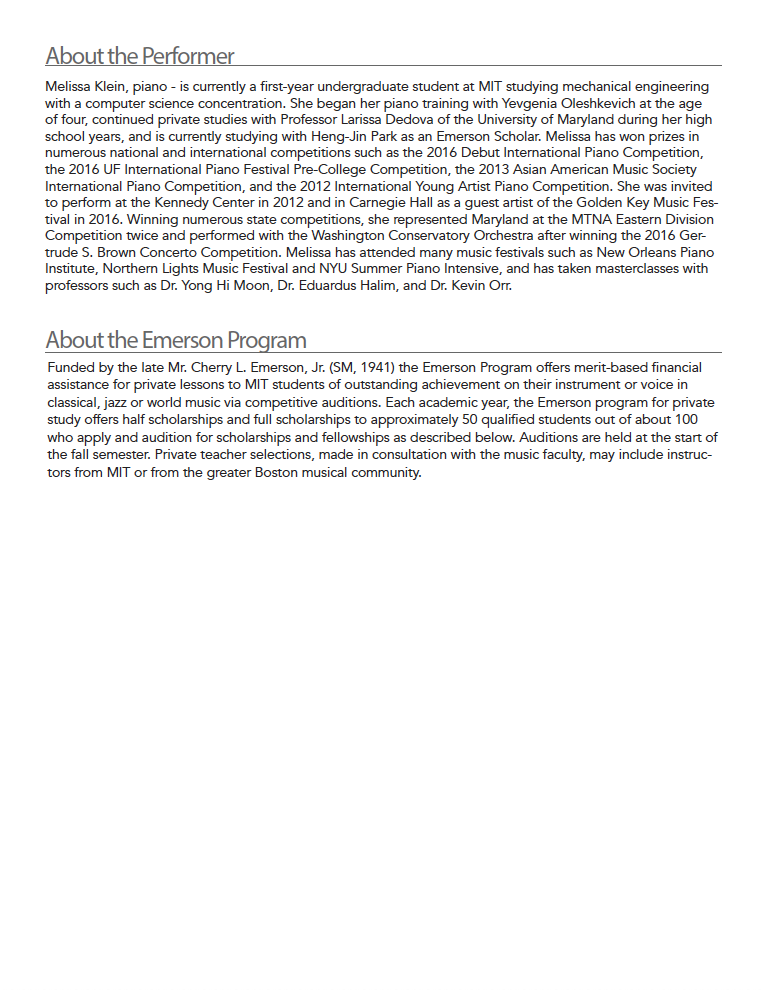
For several years, I performed in a piano trio with Margaret Zhang, cello, and Cathy Choi, violin. Past repertoire includes: Arensky Piano Trio No. 1, Rachmaninoff Trio Elegiaque No. 1, Brahms Piano Trio No. 2. Recordings to come!
A previous performance for music school auditions: